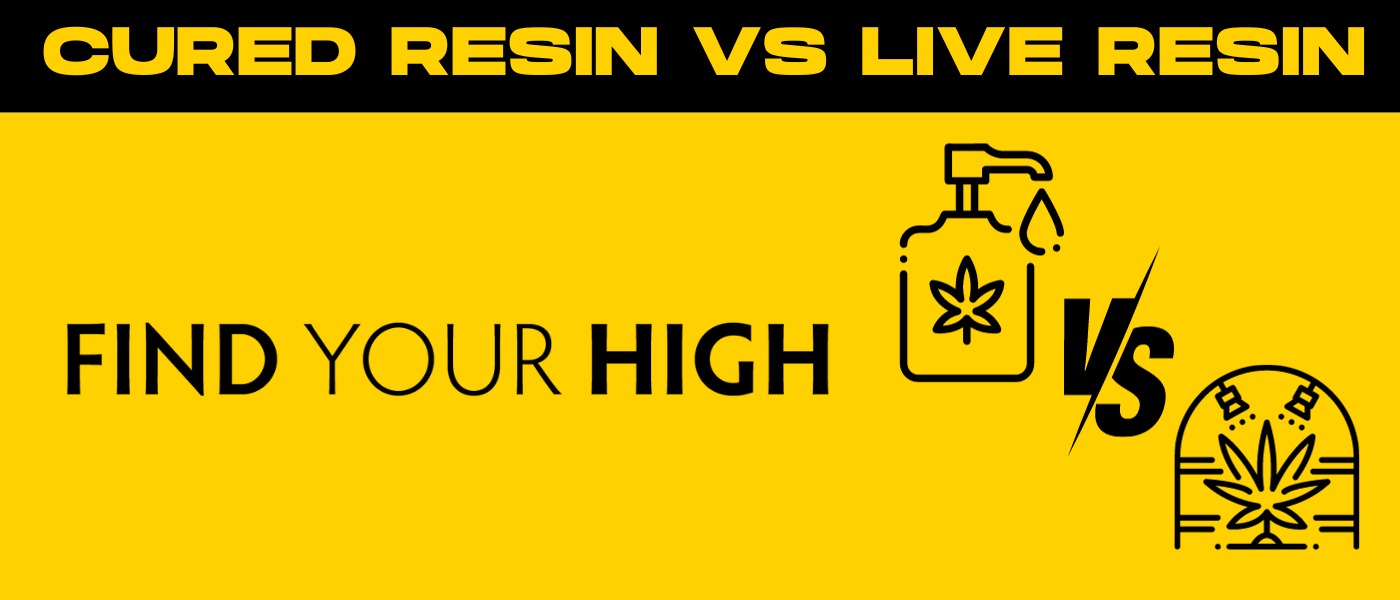Cannabis enthusiasts constantly seek new ways to experience the plant’s myriad benefits.
Two popular types of cannabis concentrates have emerged in recent years: cured resin vs live resin. But what distinguishes one from the other?
And which one is right for you?
In this blog post, we’ll dive into the differences between “cured resin vs. live resin” and their extraction methods, textures, potencies, and flavors, enabling you to make an informed decision on your next concentrate purchase.
Key Takeaways
- Cured and live resin differs in processing methods, flavors, and potencies.
- Cured resin offers a powerful experience with an enhanced flavor profile due to the curing process, while the live resin is renowned for its higher terpene content and fresher taste.
- Factors such as potency, terpene profiles, extraction methods safety considerations should be taken into account when selecting between cured or live resin concentrates.
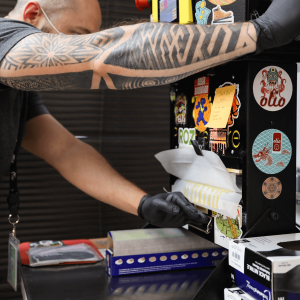
Understanding Cured and Live Resin
At first glance, cured and live resin may seem quite similar—both are derived from the cannabis plant and are known for their potency and enjoyable user experience.
However, their unique processing methods, flavors, and potencies set them apart. Grasping these differences is crucial when deciding which concentration best suits your needs.
When comparing cured resin vs. live resin, it’s important to note that both live and cured resin have their unique properties and extraction methods.
Cured resin is created from dried and cured cannabis plant material, following a traditional extraction method.
On the other hand, live resin is derived from fresh, frozen cannabis plants, preserving the plant’s natural compounds and offering a fresher taste.
Next, we’ll delve into the traditional method of producing cured resin and the freshness preservation technique employed for live resin.
Cured Resin: The Traditional Method
Cured resin is crafted from dried and cured cannabis plants, resulting in a more potent and complex flavor profile.
The extraction process involves separating the cannabis trichomes, which are the resin glands, from the cannabis flower of the cured bud using techniques such as heat, solvents, or pressure. The outcome is a highly potent cannabis concentrate.
When it comes to preservation, cured resin is best stored in a dry, cool, and dark environment. This traditional extraction method has its advantages, such as a longer shelf life and a more robust flavor profile.
However, it also has its drawbacks, as the curing process can sometimes lead to a loss of terpenes, responsible for the plant’s aroma and flavor.
Live Resin: Preserving Freshness
Live resin, on the other hand, is produced from fresh, frozen cannabis plants. The preservation process involves:
- Freezing the cannabis plant immediately after harvest
- This is different from the butane hash oil (BHO) extraction method used for some cured resins
- This method retains a higher concentration of the plant’s natural cannabinoids and terpenes than smoking cured buds or using cured resin.
The extraction process for live resin is quite distinct from that of cured resin, requiring the entire plant to be cut, frozen, and stored, necessitating a larger amount of space.
This difference in extraction methods means that live resin has a more vibrant taste and higher terpene levels.
Overall, the choice between cured and live resin comes down to personal preference, with some consumers valuing the potency and complex flavors of cured resin.
In contrast, others prioritize the fresher taste and higher terpene content of live resin.
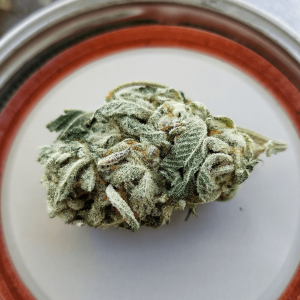
Consistency and Texture
The consistency and texture are another key differentiation between cured and live resin. Cured resin typically exhibits a more crystallized and stable texture, while live resin boasts a smoother, terpene-rich consistency.
Such differences play a significant role in determining which type of concentrate best suits individual preferences and consumption methods.
For a clear understanding of these variations, we’ll scrutinize the textural characteristics of both cured and live resin.
We’ll first explore the crystallized and stable nature of cured resin, then progress to the smooth and terpene-rich texture of live resin.
Cured Resin: Crystallized and Stable
Cured resin has a crystallized texture due to the drying and curing process, making it more stable for handling and consumption.
This slightly granular and oily consistency can be likened to a shatter or crystalline structure. The stable texture of cured resin allows for easier storage and handling, making it a popular choice among consumers who prefer a more manageable concentrate.
The complex flavor profile of cured resin is also enhanced by its crystallized texture, as the curing process locks in cannabinoids and terpenes.
When it comes to potency, cured resin is highly effective, offering a powerful experience for those seeking a robust, complex flavor profile.
Live Resin: Smooth and Terpene-Rich
In contrast, live resin has a smoother texture due to the preservation of terpenes and cannabinoids during freezing.
This consistency is characterized by being between a wax and a sauce, providing a more flavorful and aromatic experience.
The higher terpene content in live resin enhances its flavor and contributes to its smooth texture, making it a preferred choice for consumers seeking a more enjoyable and potent concentrate.
The fresher taste and higher terpene levels in live resin result from the preservation of the plant’s natural compounds during the freezing process.
This method ensures a more vibrant flavor profile and a more potent concentrate, with live resin containing up to 90% THC. For those seeking a fresher taste and higher terpene content, live resin is ideal.
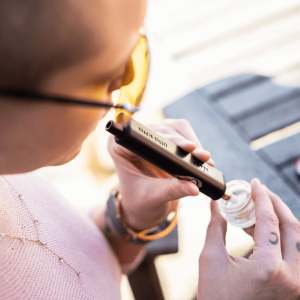
Potency and Terpene Profiles
Concerning potency and terpene profiles, both cured and live resin boast impressive concentrations.
Cured resin is known for its high potency and complex flavor profile, while live resin offers higher terpene levels and a fresher taste.
Understanding these differences can help consumers decide which type of concentration best suits their preferences and needs.
Next, we’ll scrutinize cured and live resin’s potency and terpene profiles. We’ll begin with the high potency and intricate flavors of cured resin, then discuss the refreshing taste and higher terpene content of live resin.
Cured Resin: High Potency, Complex Flavors
The curing process employed in the production of cured resin preserves the cannabinoid and terpene content, resulting in a highly potent and complex flavor profile.
With concentrates containing up to 80-90% THC, cured resin is a powerful option for those seeking an intense experience.
The complex flavor of the cured resin is further enhanced by its crystallized texture, making it an ideal choice for consumers who appreciate intricate and robust flavor profiles.
In addition to its high potency, traditional cured resins offer a unique experience in terms of flavor and aroma. The drying and curing process locks in cannabinoids and terpenes, creating a potent and flavorful concentrate.
For those seeking a rich, complex experience, cured resin is an excellent option.
Live Resin: Higher Terpenes, Fresher Taste
On the other hand, live resin is known for its fresher taste and higher terpene levels, thanks to preserving the plant’s natural compounds during the freezing process.
The higher terpene content in live resin contributes to its smooth texture and enhances its flavor, providing a more enjoyable and potent experience for consumers.
With up to 90% THC, live resin is renowned for its high potency.
Preserving the plant’s natural compounds during the freezing process results in a more vibrant flavor profile and a more potent concentrate. Live resin is the perfect choice for those seeking a fresher taste and a higher terpene content.
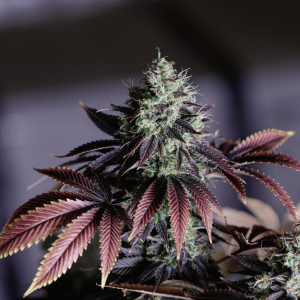
Extraction Methods and Safety Concerns
Both cured and live resin are created using distinct extraction methods, which can affect their safety and quality. As such, it’s crucial to be aware of these differences to make an informed decision when choosing between the two types of concentrates.
The following discussion will explore the extraction methods and safety concerns associated with cured and live resin production.
We’ll start with the controlled humidity extraction for cured resin and then discuss the solvent-based extraction used for live resin.
Cured Resin: Controlled Humidity Extraction
Cured resin is extracted from dried, cured plants in a controlled humidity, ensuring a safe and consistent product.
Various extraction methods are available for cured resin, including hydrocarbon extraction and solventless methods like dry sieve and water extraction.
These methods help to preserve the cannabinoid and terpene content of the cured resin, resulting in a highly potent and complex flavor profile.
While the controlled humidity extraction method for cured resin is generally safe, it’s important to note that the quality of the end product may be compromised if the extraction process is not properly executed.
As such, it’s crucial to ensure you’re purchasing cured resin from a reputable source with high-quality standards.
Live Resin: Solvent-Based Extraction
Live resin, meanwhile, is extracted using solvents like butane, which requires careful handling and expertise to ensure safety and quality.
The extraction process for live resin is more complex than that of cured resin, necessitating professional extraction labs to guarantee a safe and consistent product.
Although the solvent-based extraction method for live resin can produce a high-quality concentrate, it’s essential to be aware of the potential risks associated with this process.
Incomplete purging or incorrect temperature management during extraction can compromise the quality of the end product and even pose safety concerns.
Note that it’s important to purchase live resin from a trusted source with rigorous quality control measures in place.
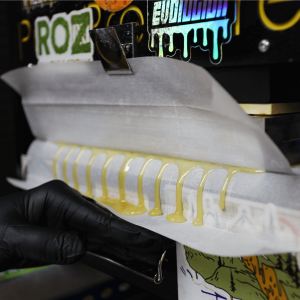
Pricing and Consumer Preferences
The price of cured and live resin can be influenced by various factors, such as strain, extraction difficulty, consistency, brand reputation, and appearance.
Additionally, consumer preferences play a significant role in the choice between cured and live resin, with factors like taste, consistency, manageability, method of consumption, flavor, and potency all coming into play.
In the following segment, we’ll investigate the factors impacting the price of cured and live resin and the considerations consumers need to assess when choosing between these two types of concentrates.
Factors Affecting Price
The price of cannabis concentrates, including cured and live resin, is determined by a variety of factors, including:
- Strain
- Extraction difficulty
- Consistency
- Brand reputation
- Appearance
Certain strains may necessitate a more complex extraction process, which can be more time and resource-intensive, thus increasing the cost.
Moreover, the complexity of the extraction process can also influence the price of concentrates, with complex extraction processes necessitating more time and resources, resulting in higher costs.
In addition to these factors, consistency, brand reputation, and appearance can all play a role in the price of cannabis concentrates.
Generally speaking, higher-quality concentrates with a more consistent texture, better brand reputation, and more attractive appearance will be more expensive.
Choosing Between Cured and Live Resin
When deciding between cured and live resin, factors such as potency, terpene profiles, extraction methods, and safety considerations should be considered. While cured resin offers a more complex flavor profile and higher potency, live resin provides a fresher taste and higher terpene levels.
Ultimately, the choice between cured and live resin comes down to personal preference, with some consumers valuing the potency and complex flavors of cured resin.
In contrast, others prioritize the fresher taste and higher terpene content of live resin. In the debate of cured resin vs. live resin, it’s all about what suits your individual needs and preferences.
By considering the factors that matter most to you, such as:
- taste
- consistency
- manageability
- method of consumption
- flavor
- potency
You can make an informed decision that best suits your preferences and needs.

Types of Cured and Live Resin Concentrates
Various types of cured and live resin concentrates are available, each offering unique textures, appearances, and flavor profiles.
By familiarizing yourself with these different forms, you can better understand which type of concentrate is best suited for your personal preferences and consumption methods.
Next, we’ll outline the various forms of cured and live resin concentrates, such as:
We’ll begin by discussing cured resin concentrates before addressing the different types of live resin concentrates.
Budder, Badder, and Crumble
Budder, badder, and crumble are all types of cured resin concentrates, each offering varying consistencies, flavors, and potencies. Here are the characteristics of each:
- Budder: characterized by its consistency, similar to that of butter or batter.
- Badder: has a consistency similar to that of a thick paste.
- Crumble: a type of resin concentrate that has been cured and has a dry, crumbly consistency.
The potency of these cured resin concentrates can vary, with the THC content of budder ranging from 55-88% depending on the strain.
The oily, malleable consistency of budder allows consumers to precisely control the quantities they desire when dabbing, making it highly convenient.
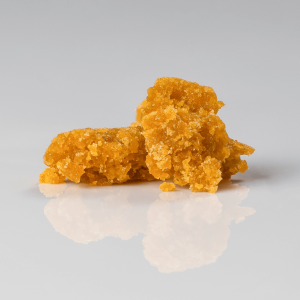
Sugar, Diamonds, Sauce, and Shatter
Sugar, diamonds, sauce, and shatter are all forms of live resin concentrates, offering unique textures, appearances, and flavor profiles. These live resin concentrates are created using solvents like butane, which requires careful handling and expertise to ensure safety and quality.
The textures, appearances, and flavor profiles of these live resin concentrates can vary greatly, providing consumers with a range of options to suit their specific preferences. Some examples include:
- Shatter: typically brittle and glass-like
- Sauce: softer and more malleable
- Diamonds: have a crystalline structure
- Sugar: has a granular texture
By understanding the characteristics of each type of live resin concentrate, you can decide which one best suits your needs and preferences.
Summary
In conclusion, both cured and live resin offer unique experiences for cannabis enthusiasts, with each type of concentrate boasting distinct potencies, flavors, extraction methods, and textures.
By understanding the differences between cured and live resin, as well as the factors that influence their price and consumer preferences, you can make an informed decision on which type of concentrate best suits your individual needs and preferences.
Whether you prioritize potency and complex flavors or a fresher taste and higher terpene content, there’s a cannabis concentrate out there for you.
Frequently Asked Questions
1. What is better cured resin or live resin?
Live resin offers a fresher flavor and is made using fresh, frozen whole plants.
Cured resin, on the other hand, uses dried and trimmed cannabis flowers as its source material and provides more profound terpene flavors.
Live resin is said to be more potent due to its full-spectrum nature, while cured resin offers a more well-rounded high.
2. Are cured resin carts good?
Cured resin cartridges are a decent quality oil for vaping, though live resin is generally considered superior. High-quality BHO, CO2, and distillate oils are also acceptable options.
3. Is live resin stronger than resin?
Live resin is typically more potent than other forms of resin due to it being created from fresh cannabis material and retaining more compounds during the extraction process.
4. Does cured resin smell the same as live resin?
Live resin offers a more “dank” smell and authentic flavor compared to cured resin because it preserves whatever original flavor or aroma on the plant. This is why many consumers consider live resin a superior product.
5. What is live resin?
Live resin is a cannabis concentrate extracted from freshly harvested, flash-frozen marijuana plant material, blasted with solvents like butane, propane, or butane hash oil (BHO), and pressed for optimal flavor and potency.

 Rewards
Rewards




